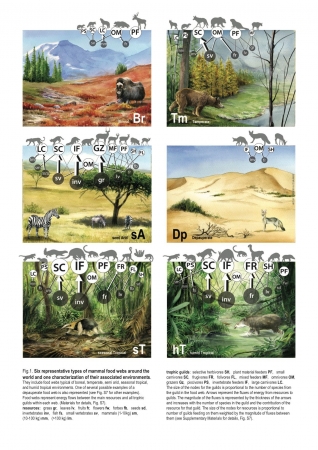Embracing complexity to understand and predict the consequences of environmental changes on biodiversity.
Miguel Bastos Araújo
- Start Friday 26 Jan 2024 4:15pm
- Finish Friday 26 Jan 2024 5:15pm
- Venue School of Geography and Environment Lecture theatre

In the past two decades, there has been a significant increase in studies using models to understand and predict the impact of environmental changes on biodiversity. Typically, these studies begin by examining the relationship between species distributions and environmental variables, based on the assumption that the environment determines the limits of tolerance for species survival. As a result, alterations in environmental conditions are expected to lead to shifts in species distributions. However, a major shortcoming of existing models is their singular focus on individual species. Although these models can be applied to thousands of species at once, they often treat each species as an independent entity, reacting in isolation to environmental changes. This approach neglects the complex dynamics within ecological communities, where collective species responses to environmental changes are not merely the sum of individual responses. While incremental improvements to existing models are possible, progress necessitates the development of models that capture the responses of entire communities to environmental change. I suggest a promising direction would be to shift from the traditional environmental-limiting niche theory, which is applicable to individual species, to a resource-limiting niche theory. This approach considers the impact of the environment on the coexistence of multiple species within communities, providing a more comprehensive understanding of ecological dynamics.
Bio
Miguel B. Araújo is globally recognized as a leading expert in the study of the effects of climate change on biodiversity. His research has been instrumental in developing current best practices for predicting changes in biodiversity over time and assessing the broader impact of human activities on the natural world. His methodological innovations have inspired thousands of scientists, and his evaluations of climate change effects on biodiversity have significantly influenced public policies at various scales, from local to global.
Araújo’s scientific achievements are evidenced by his substantial publication record of approximately 300 publications, his consistent recognition as a ‘highly cited’ researcher by Thomson Reuters since 2014, his mentorship of nearly 80 researchers and postgraduate students, and his success in securing over €80 million in research funding.
Prof. Araújo has received several prestigious awards, highlighting his contributions to ecological research and biodiversity. These include the European Ecological Federation Ernst Haeckel Prize (2019) for senior scientists advancing European ecological research, the Pessoa Prize (2018) recognizing significant contributions in arts, literature, or science, the Rey Jaime I Prize (2016) awarded by the King of Spain for contributions to improving the ecological environment, the International Biogeography Society MacArthur & Wilson Award (2013) for notable contributions to biogeography, and the GBIF Ebbe Nielsen Prize (2013) for innovative work in biosystematics and biodiversity informatics.
He has also been elected to the Lisbon Academy of Sciences and appointed as an honorary member of the College of Biologists in Portugal, an honor unprecedented for a non-biologist. Since 2014, Prof. Araújo has served as the Editor-in-Chief of “Ecography”. He is the Chair of the Scientific Council for Natural Sciences at the Portuguese Foundation for Science and Technology, a member of the Portuguese Council for the Environment and Sustainability, the Vice-Chair of the Gulbenkian Prize for Humanity’s Jury (supporting Angela Merkel as Chair), and a regular member of several evaluation panels, including those for the BBVA Foundation, ERC, and NATO Science for Peace and Security ISEG.
The Leverhulme Centre for Nature Recovery and Biodiversity Network are interested in promoting a wide variety of views and opinions on nature recovery from researchers and practitioners.
The views, opinions and positions expressed within this lecture are those of the author alone, they do not purport to reflect the opinions or views of the Leverhulme Centre for Nature Recovery/Biodiversity Network, or its researchers.
